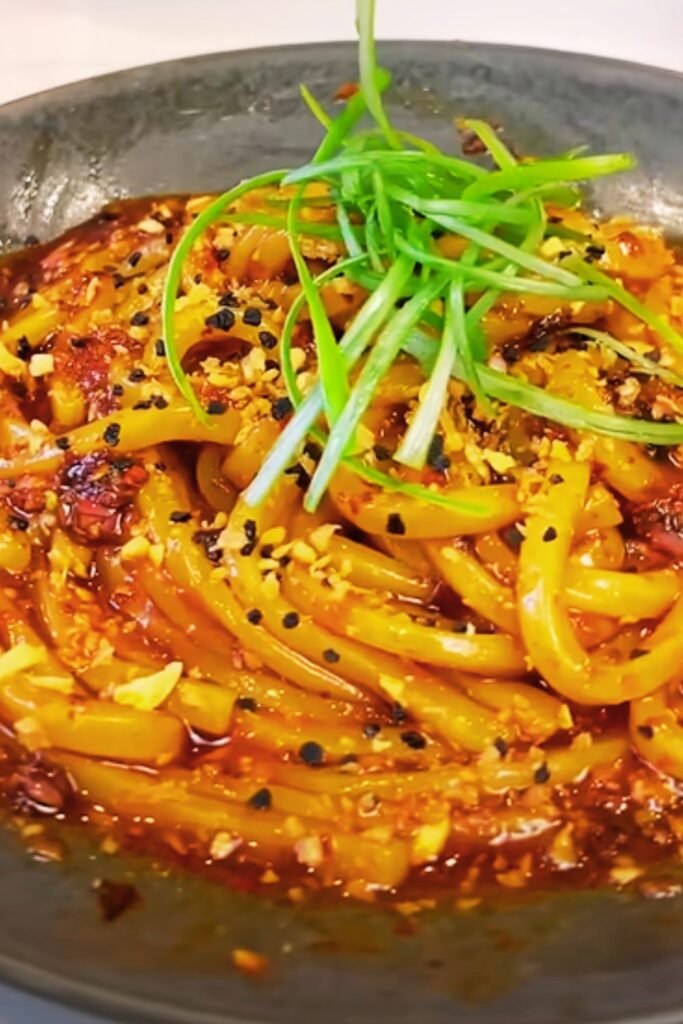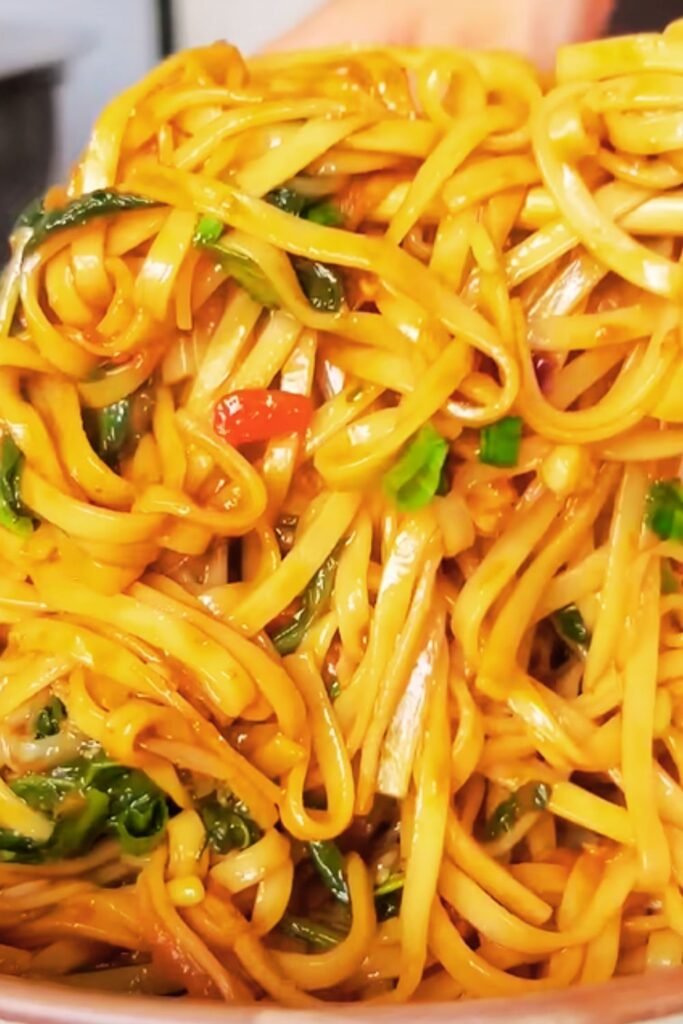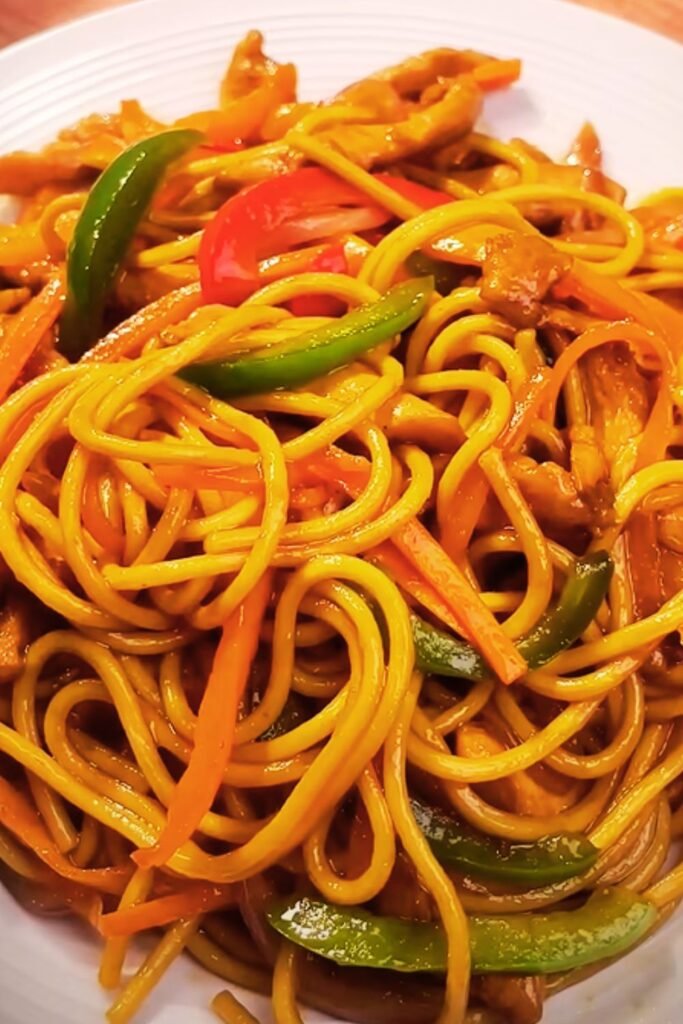There’s something magical about the moment when tender chicken meets silky noodles in a glossy, umami-rich soy sauce. I’ve been perfecting this soy sauce chicken and noodles recipe for years, and I can confidently say it’s become my go-to comfort food that never fails to satisfy. This dish combines the deep, complex flavors of traditional Asian cooking with the heartiness that makes it perfect for any occasion.
What makes this recipe truly special is its versatility and the way it brings together simple ingredients to create something extraordinary. The chicken becomes incredibly tender as it simmers in the aromatic soy sauce mixture, while the noodles absorb all those wonderful flavors. Whether you’re cooking for your family on a busy weeknight or preparing something impressive for guests, this dish delivers every single time.
Understanding the Magic Behind Soy Sauce Chicken
Soy Sauce Chicken (红烧鸡): A traditional Chinese braising technique where chicken is slow-cooked in a mixture of soy sauce, sugar, and aromatic spices until it becomes incredibly tender and flavorful.
Dark Soy Sauce: A thicker, less salty version of regular soy sauce that provides deep color and rich, molasses-like sweetness to dishes.
Light Soy Sauce: The standard soy sauce used for seasoning, providing the primary salty and umami flavors in the dish.
Shaoxing Wine: A Chinese rice wine that adds depth and complexity to braised dishes, though dry sherry makes an excellent substitute.
Rock Sugar: Traditional Chinese sweetener that dissolves slowly and provides a glossy finish to braised dishes.
The beauty of soy sauce chicken lies in its simplicity. Unlike complicated recipes that require dozens of ingredients, this dish relies on the harmony between a few key components. The soy sauce provides the foundation of flavor, while the sugar balances the saltiness and creates that beautiful glossy coating. The aromatics – ginger, garlic, and star anise – add layers of complexity that make each bite interesting.
Selecting the Perfect Chicken and Noodles
When I make this dish, I always start with choosing the right chicken. I prefer using chicken thighs because they stay incredibly moist during the braising process and have more flavor than breast meat. However, you can absolutely use a whole chicken cut into pieces or even drumsticks if that’s what you have on hand.

For the noodles, I’ve experimented with many different types over the years. Fresh egg noodles work beautifully because they have a tender texture that complements the chicken perfectly. Rice noodles are another excellent choice, especially if you want to keep the dish gluten-free. Even dried pasta like linguine or fettuccine can work in a pinch, though the texture will be slightly different.
Essential Ingredients and Preparation
| Ingredient | Quantity | Purpose | Substitutions |
|---|---|---|---|
| Chicken thighs (bone-in) | 2 lbs | Main protein | Drumsticks, whole chicken pieces |
| Fresh egg noodles | 1 lb | Base carbohydrate | Rice noodles, dried pasta |
| Light soy sauce | 1/2 cup | Primary seasoning | Regular soy sauce |
| Dark soy sauce | 1/4 cup | Color and depth | Mix light soy sauce with molasses |
| Shaoxing wine | 1/4 cup | Flavor complexity | Dry sherry, rice wine |
| Rock sugar | 3 tbsp | Sweetness and gloss | Brown sugar, regular sugar |
| Fresh ginger | 2-inch piece | Aromatic base | Ground ginger (1 tsp) |
| Garlic cloves | 6 large | Flavor foundation | Garlic powder (2 tsp) |
| Star anise | 3 pods | Warm spice note | Five-spice powder (1 tsp) |
| Green onions | 4 stalks | Fresh finish | Chives, regular onions |
| Vegetable oil | 2 tbsp | Cooking medium | Any neutral oil |
| Water | 2 cups | Braising liquid | Chicken stock for richer flavor |
The preparation is just as important as the ingredients themselves. I always make sure to pat the chicken completely dry before cooking – this helps achieve better browning and prevents the oil from splattering. The ginger should be sliced thick enough that it won’t break apart during the long cooking process, and I prefer to smash the garlic cloves lightly to release more of their flavor.
Step-by-Step Cooking Process
My approach to this dish has evolved over time, and I’ve found that taking your time with each step makes all the difference in the final result.
Preparing the Chicken: Start by heating the oil in a large, heavy-bottomed pot or Dutch oven over medium-high heat. I season the chicken pieces generously with salt and pepper, then brown them on all sides until they develop a beautiful golden color. This step is crucial – it’s not just about cooking the chicken, but about building layers of flavor that will enhance the entire dish.
Building the Braising Liquid: Once the chicken is browned, I remove it from the pot and add the ginger and garlic to the same oil. The aroma that fills your kitchen at this moment is absolutely incredible. I cook these aromatics until they’re fragrant but not burned, usually about a minute.
Next comes the magic moment when I add both soy sauces, the Shaoxing wine, and rock sugar to the pot. The mixture will bubble and release an intoxicating aroma that always makes my mouth water. I let this cook for about two minutes to allow the alcohol to evaporate and the flavors to meld together.

The Braising Process: I return the chicken to the pot along with the star anise and enough water to partially cover the chicken pieces. The key here is not to completely submerge the chicken – you want about two-thirds coverage. This allows some pieces to steam while others braise, creating different textures that make the dish more interesting.
I bring the mixture to a boil, then reduce the heat to low and cover the pot. The chicken needs to simmer gently for about 45 minutes to an hour, depending on the size of your pieces. I turn the chicken every 15 minutes to ensure even cooking and color distribution.
Cooking the Noodles to Perfection
While the chicken is braising, I prepare the noodles. This timing is important because you want everything to come together when the chicken is perfectly tender. I bring a large pot of salted water to a boil and cook the noodles according to the package directions, but I always aim for them to be slightly undercooked since they’ll continue cooking when combined with the hot braising liquid.
Fresh egg noodles typically take only 2-3 minutes to cook, while dried noodles might need 8-10 minutes. I always taste-test them to make sure they have the right texture – tender but still with a slight bite.
Bringing It All Together
The final assembly is where this dish really shines. I drain the noodles and divide them among serving bowls. The chicken, now fall-off-the-bone tender and beautifully glazed, gets placed on top of the noodles. But here’s the secret that makes this dish truly special – I strain the braising liquid and pour it generously over everything.
This braising liquid has been transformed during the cooking process. It’s now a glossy, intensely flavorful sauce that coats the noodles and adds moisture to every bite. I always taste it and adjust the seasoning if needed – sometimes I add a splash more soy sauce or a pinch of sugar.

Nutritional Information and Benefits
| Nutrient | Per Serving | Daily Value % | Health Benefits |
|---|---|---|---|
| Calories | 485 | 24% | Balanced energy source |
| Protein | 38g | 76% | Muscle maintenance and growth |
| Carbohydrates | 45g | 15% | Quick energy and satiety |
| Fat | 18g | 28% | Essential fatty acids |
| Sodium | 1,240mg | 54% | Electrolyte balance (moderate intake) |
| Iron | 3.2mg | 18% | Oxygen transport support |
| Vitamin B6 | 0.8mg | 47% | Nervous system support |
| Niacin | 12mg | 75% | Energy metabolism |
This dish provides excellent protein content from the chicken, complex carbohydrates from the noodles, and various micronutrients. The ginger and garlic also contribute anti-inflammatory properties and immune system support.
Variations and Customizations
Over the years, I’ve developed several variations of this basic recipe that keep things interesting. Sometimes I add hard-boiled eggs during the braising process – they absorb the flavors beautifully and add extra protein. Shiitake mushrooms are another favorite addition that brings an earthy depth to the dish.
For vegetables, I love adding baby bok choy or Chinese broccoli during the last few minutes of cooking. They retain their crisp texture while picking up the soy sauce flavors. Some days, I’ll throw in some thinly sliced carrots or snow peas for extra color and crunch.
If you prefer a spicier version, a few dried chilies or a tablespoon of chili garlic sauce can transform the dish completely. I’ve also made versions with five-spice powder instead of star anise, which gives it a more complex, warming flavor profile.
Serving Suggestions and Pairings
This dish is incredibly satisfying on its own, but there are several accompaniments that can elevate the meal even further. I love serving it with a simple cucumber salad dressed with rice vinegar and sesame oil – the cool, crisp texture provides a perfect contrast to the rich, warm noodles and chicken.
Steamed vegetables like broccoli or asparagus work wonderfully alongside this dish. They add nutritional value and help balance out the richness of the soy sauce. Sometimes I’ll prepare a quick stir-fry of whatever vegetables I have on hand, seasoning them lightly so they don’t compete with the main dish.
For those who enjoy soup, a light miso soup or hot and sour soup makes an elegant starter. The umami flavors complement rather than compete with the soy sauce chicken, creating a cohesive meal that feels restaurant-quality.
Storage and Reheating Tips
One of the things I love most about this recipe is how well it keeps. The leftovers are often even better than the original meal because the flavors have more time to develop and meld together. I store the chicken and sauce separately from the noodles to prevent them from becoming mushy.
The chicken and sauce will keep in the refrigerator for up to four days, and it actually freezes beautifully for up to three months. When I’m reheating, I prefer to do it gently on the stovetop with a splash of water or chicken broth to loosen the sauce. The microwave works too, but I find the stovetop method gives better results.
If you’re planning to make this dish ahead for meal prep, I recommend slightly undercooking the chicken initially since it will continue cooking during reheating. This prevents it from becoming tough or dry.
Troubleshooting Common Issues
Through years of making this dish, I’ve encountered and solved several common problems that home cooks often face. If your sauce seems too thin, don’t worry – you can always simmer it uncovered for a few extra minutes to reduce and concentrate the flavors. Conversely, if it becomes too thick or salty, a splash of water or unsalted chicken broth will fix it right up.
Sometimes the chicken skin doesn’t brown properly, which usually means the pan wasn’t hot enough or there was too much moisture on the chicken. Making sure the chicken is completely dry and the oil is properly heated before adding the chicken will solve this issue.
If you find the dish too salty, adding a bit more rock sugar or regular sugar can help balance the flavors without diluting them. On the flip side, if it needs more depth, a splash of additional dark soy sauce will do the trick.
Questions and Answers
Q: Can I use boneless chicken for this recipe? Boneless chicken works perfectly fine, though you’ll need to reduce the cooking time to about 25-30 minutes to prevent overcooking. Boneless thighs are still my preferred choice over breast meat because they stay more tender and flavorful.
Q: What’s the best way to tell when the chicken is done? The chicken should be fork-tender and easily pull apart. The internal temperature should reach 165°F (74°C), but more importantly, it should feel tender when you pierce it with a fork. The meat should almost fall off the bone.
Q: Can I make this recipe in a slow cooker? Absolutely! Brown the chicken first in a skillet, then transfer everything to your slow cooker. Cook on low for 4-6 hours or high for 2-3 hours. The results are incredibly tender, though you might miss some of the caramelized flavors you get from stovetop braising.
Q: Is there a vegetarian version of this dish? I’ve successfully made this with firm tofu or tempeh instead of chicken. Cut the protein into large cubes, lightly fry until golden, then braise using the same technique. Mushrooms like king oyster or shiitake also work wonderfully and provide that meaty texture.
Q: How can I make this dish less salty? Start with less soy sauce than the recipe calls for – you can always add more, but you can’t take it away. Using low-sodium soy sauce is another option. Adding more vegetables or serving it over plain rice can also help balance the saltiness.
Q: Can I prepare this dish in advance for entertaining? This dish is actually perfect for entertaining because it tastes even better the next day. I often make the chicken a day ahead and just reheat it gently while cooking fresh noodles. The flavors have time to develop, and you’re not stressed about timing everything perfectly.
Q: What type of noodles work best if I can’t find fresh egg noodles? Dried egg noodles, rice noodles, or even ramen noodles (without the seasoning packet) work well. I’ve even used spaghetti in a pinch. The key is to slightly undercook them since they’ll absorb some of the braising liquid.
Q: Why does my sauce sometimes separate or look oily? This usually happens when the heat is too high during braising. Keep the heat low and gentle – you want a slow simmer, not a rolling boil. If it happens, a quick whisk usually brings it back together.
This soy sauce chicken and noodles recipe has become more than just a meal in my kitchen – it’s a source of comfort, a way to bring family together, and a dish that never fails to satisfy. The combination of tender, flavorful chicken with silky noodles in that gorgeous, glossy sauce creates something truly special. Every time I make it, I’m reminded of why simple, well-executed dishes are often the most memorable ones.
The beauty of this recipe lies in its adaptability and forgiving nature. Whether you’re a beginner cook or someone with years of experience, you can make this dish your own while still honoring its traditional roots. I hope you’ll give it a try and discover the same joy I’ve found in this wonderful combination of flavors and textures.